First Quarter Results Show Benefits of Consistent Execution on Financial and Strategic Objectives
First Quarter Revenue Growth of 32% Compared to First Quarter 2022
Raises Full Year 2023 Revenue and Adjusted EBITDA Guidance
MOORESTOWN, N.J., May 8, 2023 /PRNewswire/ — Tabula Rasa HealthCare, Inc.® (Nasdaq:TRHC) (“TRHC” or the “Company”), a leading healthcare technology company advancing the safe use of medications, today reported financial results for the first quarter ended March 31, 2023.
Highlights from the first quarter ended March 31, 2023, include:
- First quarter revenue from continuing operations of $88.3 million, representing a 32% increase versus the prior year first quarter
- First quarter GAAP net loss and adjusted EBITDA from continuing operations of $7.1 million and $4.7 million, respectively
“We delivered an outstanding quarter, starting the year with revenue and adjusted EBITDA above the high end of our guidance range. These results were driven by our renewed focus, and consistent execution by our team, who are committed to our mission of improving the health of those we serve. During the last quarter, we have continued to see evidence that our strategies within PACE and in adjacent markets are working,” said Brian Adams, President and Chief Executive Officer.
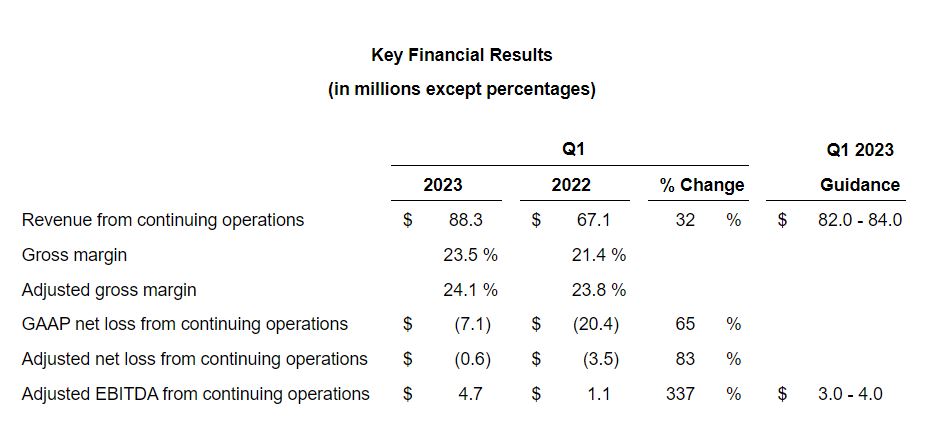
First Quarter 2023 Financial Results
All comparisons, unless otherwise noted, are to the three months ended March 31, 2022, and reflect continuing operations.
- Revenue – Revenue of $88.3 million increased 32% compared to $67.1 million in the first quarter of 2022 and increased 7% as compared to the fourth quarter of 2022. Medication revenue of $68.8 million increased 35% due to continued strong PACE census growth at existing centers and higher revenue per PACE participant. Technology-enabled solutions revenue of $19.5 million increased 21% compared to $16.1 million in the first quarter of 2022 and increased 7% as compared to the fourth quarter of 2022. Technology-enabled solutions revenue growth was driven by our pharmacy benefits management (“PBM”) and risk adjustment services.
- Gross Profit – Gross profit (exclusive of depreciation and amortization) of $20.8 million (23.5% of revenue) increased 44% as compared to $14.4 million (21.4% of revenue) in the first quarter of 2022. Adjusted gross profit of $21.2 million (24.1% of revenue) increased 33% as compared to $15.9 million (23.8% of revenue) a year ago. Both medication and technology-enabled solutions gross margin increased vs. the year-ago period.
- GAAP Net Loss – GAAP net loss from continuing operations of $7.1 million compared to a net loss of $20.4 million in the first quarter of 2022. The improvement vs. the prior year was primarily driven by the higher gross profit noted above and a reduction in operating expenses.
GAAP net loss from discontinued operations (net of tax) of $8.8 million compares to a net loss of $7.8 million in the first quarter of 2022. Both periods include the SinfoníaRx and DoseMe businesses. As previously announced on March 2, 2023, TRHC completed the sales of SinfoníaRx and DoseMe during the first quarter of 2023.
- Adjusted EBITDA – Adjusted EBITDA from continuing operations of $4.7 million (5.4% of revenue) increased 337% vs. $1.1 million (1.6% of revenue) in the first quarter of 2022.
A reconciliation of certain financial measures with the most directly comparable financial measures calculated in accordance with generally accepted accounting principles in the United States (“GAAP”) has been provided in this press release in the accompanying tables. An explanation of these measures is also included below under the heading “Non-GAAP Financial Measures.”
Operational Metrics
To provide transparency into our financial results, we are providing the following operational metrics.
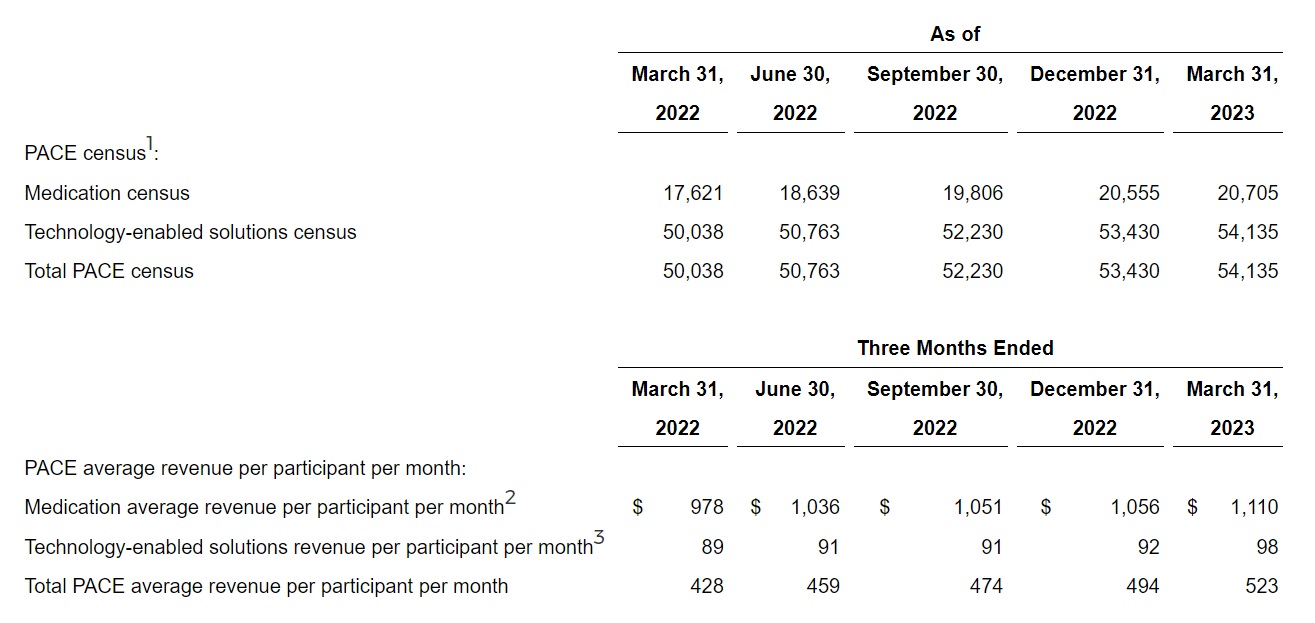
PACE backlog as of March 31, 2023, was valued at $84 million in annual revenue at maturity, which the Company defines as enrollment of 250 participants for PACE clients. By comparison, PACE backlog was valued at $78 million as of December 31, 2022.

Outlook
Based on current market conditions and our expectations as of today, we are introducing second quarter 2023 guidance and increasing our full year 2023 revenue and adjusted EBITDA guidance, initially provided on March 8, 2023, as follows:
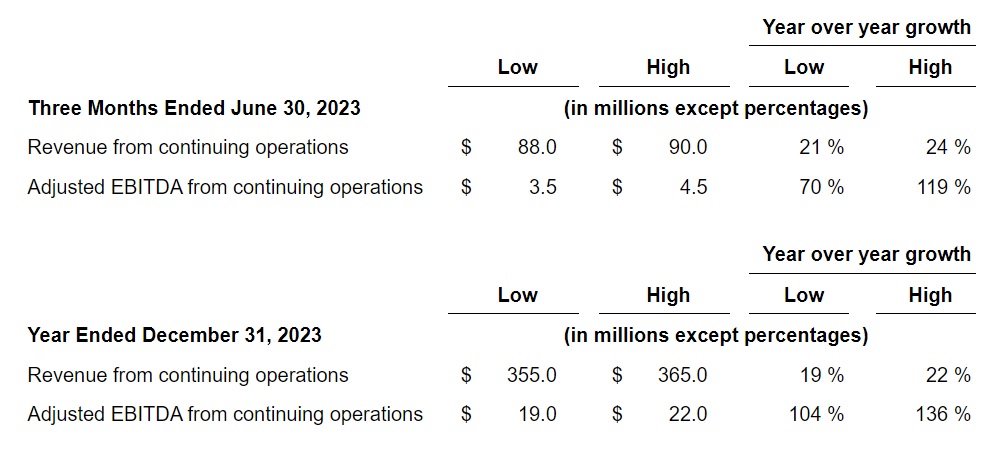
A reconciliation of the projected adjusted EBITDA from continuing operations has been provided in this press release in the accompanying tables.
Upcoming Events
Members of TRHC’s executive team are currently expected to be present at the following conferences:
- RBC Capital Markets 2023 Global Healthcare Conference in New York, NY, May 16-17;
- Benchmark’s Healthcare House Call VIRTUAL One-on-One Conference, May 23;
- Stifel 2023 Cross Sector Insight Conference in Boston, MA, June 6-7; and
- 43rd Annual William Blair Growth Conference in Chicago, IL, June 6-8
Quarterly Conference Call
The first quarter 2023 earnings conference call and webcast will be held tomorrow, Tuesday, May 9, at 8:30 a.m. ET. Those interested in participating via webcast in listen-only mode can access the event here. For participants who would like to participate via telephone, please register here to receive the dial-in number along with a unique PIN number that is required to access the call. A replay of the earnings call will be available via webcast at the Investor Relations section of TRHC’s website (ir.tabularasahealthcare.com) for 12 months.
About Tabula Rasa HealthCare
Tabula Rasa HealthCare provides medication safety solutions that empower healthcare professionals and consumers to optimize medication regimens, combating medication overload and reducing adverse drug events. TRHC’s proprietary technology solutions, including MedWise®, improve patient outcomes, reduce hospitalizations, and lower healthcare costs. TRHC’s extensive clinical tele-pharmacy network improves care for patients nationwide. Its solutions are trusted by health plans and at-risk provider groups to help drive value-based care. For more information, visit TRHC.com.
Non-GAAP Financial Measures
In addition to reporting certain financial information in accordance with GAAP, TRHC is also reporting gross profit, adjusted EBITDA, adjusted cost of revenue, adjusted gross profit, adjusted operating expenses, adjusted operating income (loss), and adjusted net income (loss), in each case from continuing operations, which are considered non-GAAP financial measures. Generally, a non-GAAP financial measure is a numerical measure of a company’s performance or financial position that either excludes or includes amounts that are not normally excluded or included in the most directly comparable measure calculated and presented in accordance with GAAP. TRHC presents adjusted EBITDA and the other non-GAAP financial measures in this release because it considers each of them to be an important supplemental measure of performance. TRHC also intends to provide adjusted EBITDA and the other non-GAAP financial measures in this release as part of the Company’s future earnings discussions and, therefore, their inclusion should provide consistency in the Company’s financial reporting.
Adjusted EBITDA consists of net income (loss) plus certain other expenses, which include interest expense, provision for income tax, depreciation and amortization, change in fair value of contingent consideration receivable, impairment charges, business optimization expenses, severance costs, divestiture-related expense, acquisition-related expense, stock-based compensation expense, and net loss on disposal of businesses. TRHC considers business optimization expenses to include lease termination costs, retention payments, and other employee and non-recurring vendor costs incurred related to its business optimization initiatives during 2022. TRHC considers severance costs to include severance costs related to the realignment of its resources. TRHC considers divestiture-related expense to include non-recurring direct transaction costs. TRHC considers acquisition-related expense to include non-recurring direct transaction and integration costs. TRHC considers net loss on disposal of businesses to include the non-recurring net loss resulting from the sales of the DoseMe and SinfoníaRx businesses. TRHC uses adjusted EBITDA for planning purposes, including analysis of the Company’s performance against prior periods, the preparation of operating budgets and determination of appropriate levels of operating and capital investments. TRHC believes that adjusted EBITDA provides additional insight for analysts and investors in evaluating the Company’s financial and operational performance.
TRHC defines adjusted cost of revenue as cost of revenue as presented on the consolidated statements of operations less those certain other expenses which are added to operating income (loss) in calculating adjusted operating income (loss) (as described below), including stock-based compensation expense and such other expenses, in each case to the extent that they are included in cost of revenue. TRHC believes adjusted cost of revenue provides analysts and investors more accurate information regarding the actual cost of products and services provided by TRHC, excluding the impact of certain non-cash charges like stock-based compensation expense, and costs of revenue that are not recurring components of its core medication and technology-enabled solutions costs, for better comparability of its cost of revenue between periods.
TRHC defines gross profit as total revenue less total cost of revenue (exclusive of depreciation and amortization) as presented on the consolidated statements of operations. TRHC defines gross margin as gross profit as a percentage of total revenue. TRHC defines adjusted gross profit as total revenue less total cost of revenue (exclusive of depreciation and amortization) as presented on the consolidated statements of operations, excluding the impact of those certain other expenses which are added to operating income (loss) in calculating adjusted operating income (loss) (as described below), including stock-based compensation expense and such other expenses, in each case to the extent that they are included in cost of revenue. TRHC defines adjusted gross margin as adjusted gross profit as a percentage of total revenue. TRHC believes adjusted gross profit and adjusted gross margin provide analysts and investors more accurate information regarding its core profit margin on sales, excluding the impact of certain non-cash charges like stock-based compensation expense, and costs of revenue that are not recurring components of its core medication and technology-enabled solutions costs, for better comparability of gross profit between periods.
TRHC defines adjusted operating expenses as operating expenses as presented on the consolidated statements of operations plus or minus (as applicable) the impact those expenses added or subtracted from operating income (loss) in calculating adjusted operating income (loss), in each case to the extent they are included in operating expense. TRHC believes adjusted operating expenses provide analysts and investors more accurate information regarding its core operating expenses, which include research and development costs, sales and marketing costs, general and administrative costs, depreciation of property and equipment, and amortization of software development costs, excluding the impact of certain non-cash charges like amortization of intangible assets acquired in prior business acquisitions and stock-based compensation expense, and charges that are not recurring components of its core operating expenses, for better comparability between periods.
TRHC defines adjusted operating income (loss) as operating income (loss) plus or minus (as applicable) amortization of acquired intangibles, change in fair value of contingent consideration receivable, impairment charges, business optimization expenses, severance costs, divestiture-related expense, acquisition-related expense, and stock-based compensation expense. The items included in the calculation of adjusted EBITDA are determined in calculating adjusted operating income (loss) in the same manner. TRHC believes adjusted operating income (loss) provides analysts and investors more accurate information regarding its core operating income (loss), excluding the impact of certain non-cash charges like amortization of intangible assets acquired in prior business acquisitions and stock-based compensation expense, and charges that are not recurring components of its core operating expenses, for better comparability between periods.
TRHC defines adjusted net income (loss) as net income (loss) plus or minus (as applicable) the impact of those expenses added or subtracted from operating income (loss) in calculating adjusted operating income (loss) along with the impact of amortization of debt discount and issuance costs, and the tax impact of all those items using an effective statutory tax rate on pre-tax income (loss) adjusted for those items. TRHC believes adjusted net income (loss) provides analysts and investors more accurate information regarding its core income (loss), excluding the impact of certain non-cash charges like amortization of intangible assets acquired in prior business acquisitions and stock-based compensation expense, and charges that are not recurring components of its core product and service costs or core operating expenses, for better comparability between periods.
In addition to the reasons given above for providing each of the non-GAAP financial measures included herein, TRHC believes each of these non-GAAP financials measures provides analysts and investors more accurate information for better comparability to other companies, although such other companies may calculate non-GAAP financial measures differently than TRHC.
Non-GAAP financial measures have limitations as an analytical tool. Investors are encouraged to review the reconciliations of adjusted EBITDA, adjusted cost of revenue, adjusted gross profit, adjusted operating expenses, adjusted operating income (loss), and adjusted net income (loss) to the most directly comparable GAAP measures provided in the accompanying tables.
Safe Harbor Statement
This press release contains certain forward-looking statements within the meaning of Section 27A of the Securities Act of 1933, as amended, and Section 21E of the Securities Exchange Act of 1934, as amended, including our guidance regarding revenue from continuing operations and adjusted EBITDA from continuing operations. Forward-looking statements may be identified by words such as “believe,” “will,” “may,” “estimate,” “continue,” “anticipate,” “intend,” “should,” “plan,” “expect,” “predict,” “could,” “potentially” or the negative of these terms or similar expressions. You should read these statements carefully because they discuss future expectations, contain projections of future results of operations or financial condition, or state other “forward-looking” information. These statements relate to, without limitation, our future plans, objectives, expectations, intentions, and financial performance and the assumptions that underlie these statements. These forward-looking statements are subject to certain risks and uncertainties that could cause actual results to differ materially from those anticipated in the forward-looking statements. Factors that might cause such a difference include, but are not limited to: (i) our expectations regarding industry and market trends, including the expected growth and continued structural change and consolidation in the market for healthcare in the United States; (ii) our expectations about the growth of Programs of All-Inclusive Care for the Elderly (“PACE”) organizations; (iii) our expectations about private payers establishing their own at-risk programs; (iv) the advantages of our solutions as compared to those of competitors; (v) our estimates about our financial performance; (vi) the visibility into future cash flows from our business model; (vii) our ability to reduce expenses as a result of our disposition of non-core businesses; (viii) our growth strategy, including our ability to grow our client base; (ix) our plans to further penetrate existing markets and enter new markets; (x) expectations of earnings, revenue, and other financial items; (xi) plans, strategies, and objectives of management for future operations; (xii) our ability to establish and maintain intellectual property rights; (xiii) our ability to retain and hire necessary associates and appropriately staff our operations; (xiv) future capital expenditures; (xv) future economic conditions or performance; (xvi) our plans to pursue strategic acquisitions and partnerships; (xvii) our plans to expand and enhance our solutions; (xviii) our estimates regarding capital requirements and needs for additional financing; and (xix) the risks described in Part I, Item 1A of our 2022 Form 10-K, filed with the SEC on March 10, 2023, and our other filings and reports filed with or furnished to the Securities and Exchange Commission. Forward-looking statements are based on our management’s beliefs and assumptions and on information currently available to our management. These statements, like all statements in this report, speak only as of their date, and we undertake no obligation to update or revise these statements in light of future developments, except as required by applicable law. We caution investors that our business and financial performance are subject to substantial risks and uncertainties.
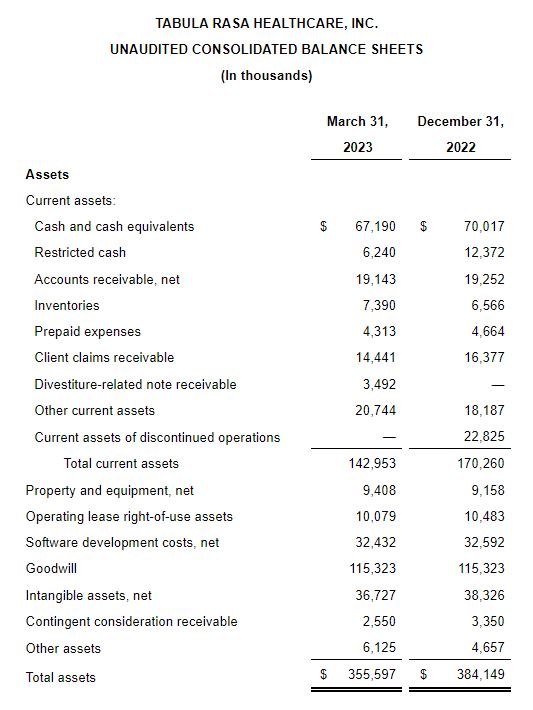
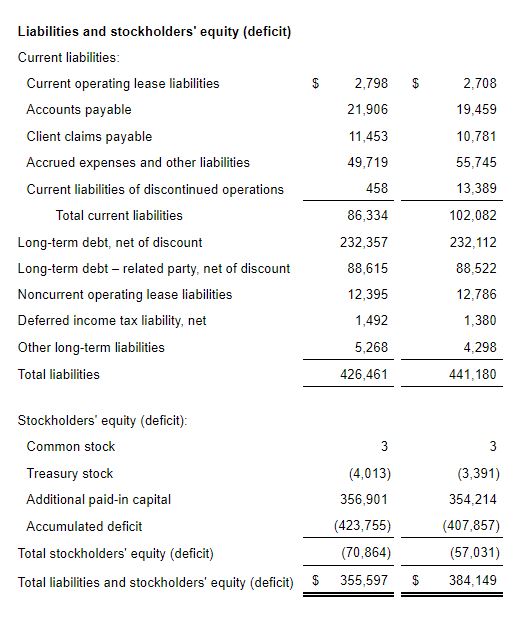
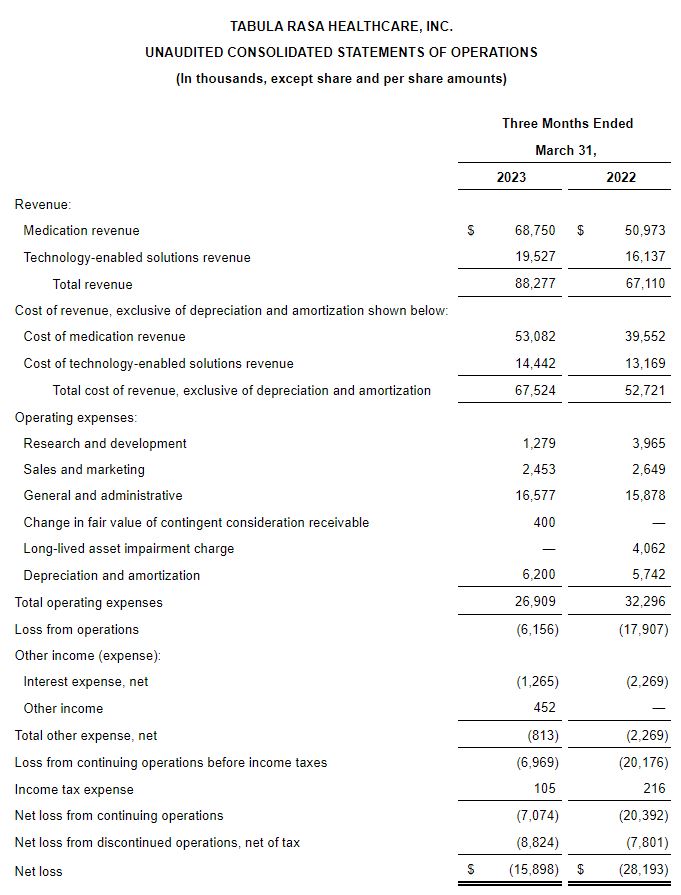

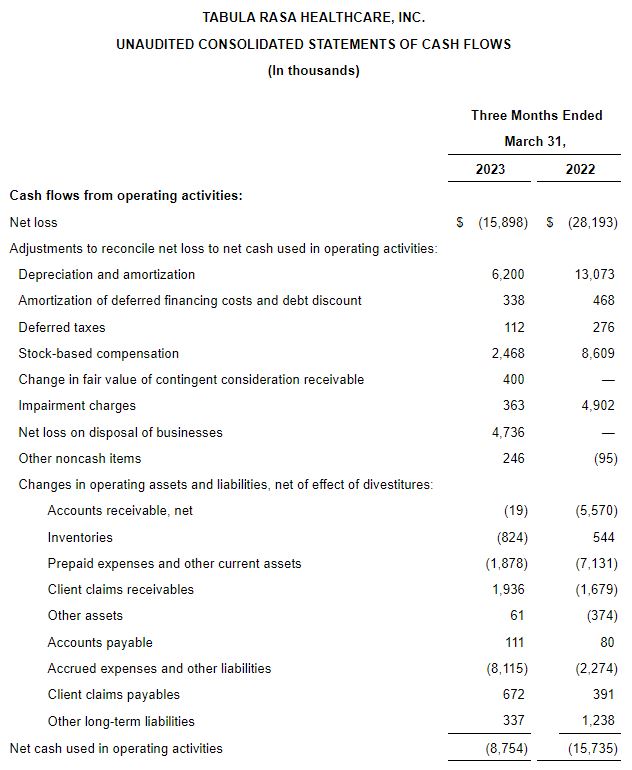
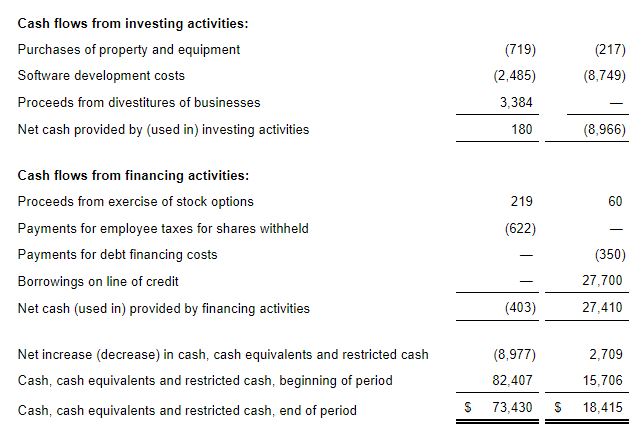
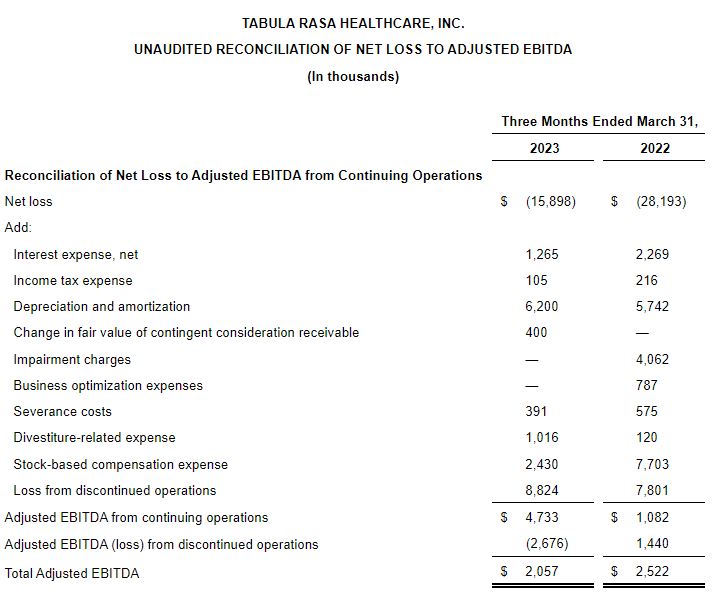
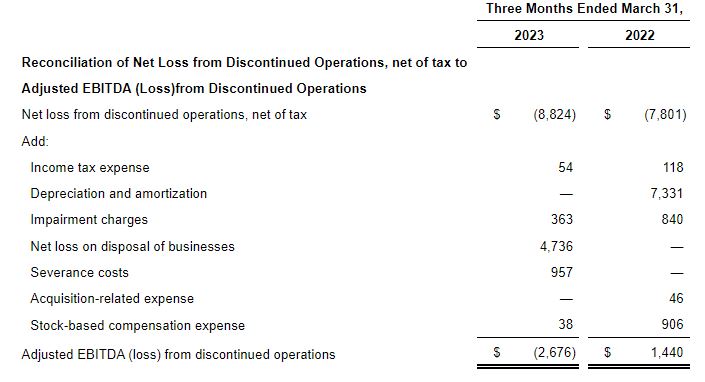
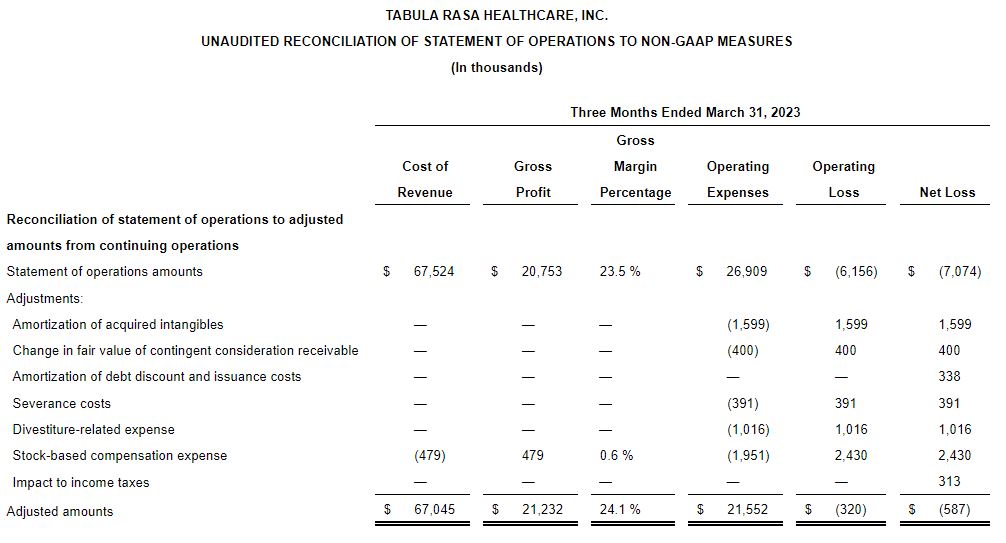
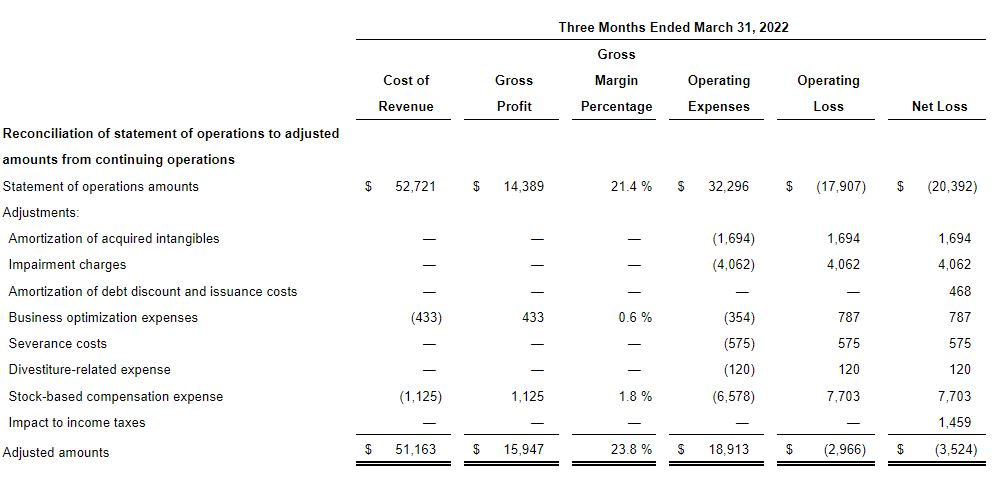
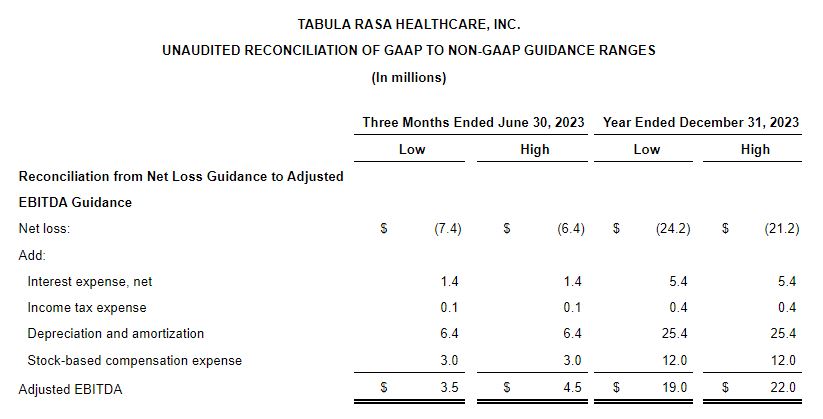
SOURCE Tabula Rasa HealthCare, Inc.
Share this: